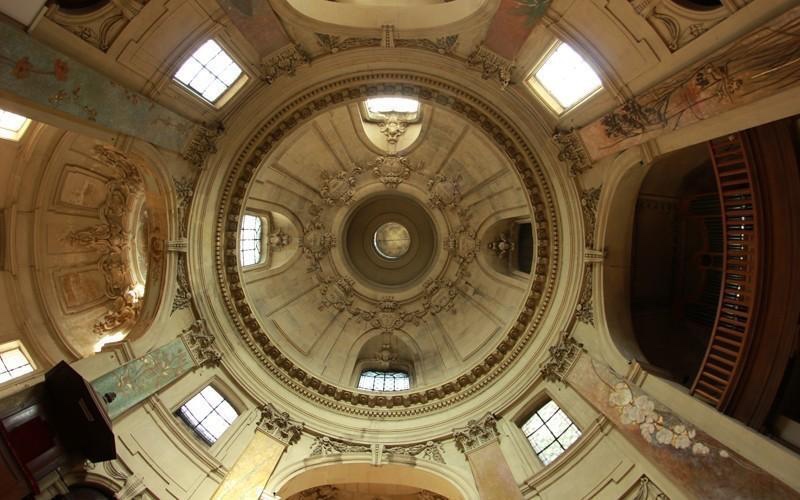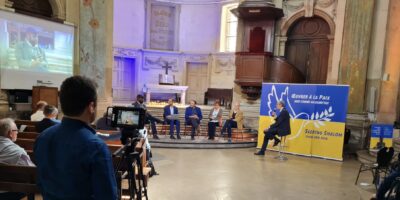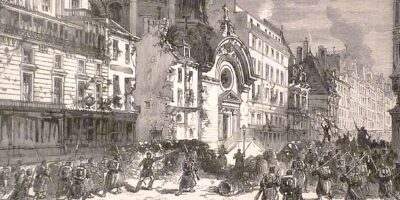When your war is not quite going as you had planned, your annual military parade to show the might and power of your armed forces to the world has to be scaled down a little.
That is President Putin’s dilemma this coming Monday, Victory Day, when Red Square is filled with dignitaries, public, military personnel, vehicles and weapons in a celebration of power. For May 9 is the date when in 1945 Nazi Germany capitulated to the Soviet army ending the war on the eastern front.
In 2008, Putin revived the old Soviet-style displays of military powess signalling even then his long term plans for reviving the Russian Empire. No doubt his plan for Monday was to celebrate the annexation of the whole of Ukraine, the replacement of President Zelensky with a Kremlin puppet, and the acquisition of the neighbour’s enormous mineral wealth and grain-growing capacity. Reports told of Russian soldiers advancing on Kyiv in the first few days of the war who even had their parade uniforms with them ready for the victory parade through the Ukrainian capital.
Neverthless Putin will put on a brave face on Monday as scaled down numbers of troops, vehicles and weapons will be paraded across Red Square. Still, 11,000 troops are expected to be on parade, which is a lot of soldiers.
Impressive as these numbers might be, they will be reminding the watching world of the huge casualties Putin’s army has sustained since since the launch of the ‘special military operation’ in Ukraine. British defence experts estimate Russia has lost over 15,000 troops. Ukraine estimates at least twice the number parading on Red Square to have died in the invasion so far, including over a dozen Russian generals – more than in the whole of World War Two. Almost a thousand Russian tanks have been destroyed, along with nearly 200 aircraft, over 150 helicopters and eight ships including the Black Sea fleet flagship Moskva.
A celebration of peace
Ukrainians have for the last two decades also celebrated May 9 – not as Victory Day but as Europe Day, a day to celebrate freedom, peace, equality, democracy and solidarity, and of belonging to the larger and interdependent European family of peoples. Back in 2004, even before the Orange Revolution erupted, my sons performed with their music band in the Europe Day celebrations on Maidan (Independence) Square. Guests of the Dutch embassy, they had won a national band competition and a trip to Kyiv. For Ukrainians, Europe Day represented hope, something to celebrate. The dream of being part of this family of peoples continues to give Ukrainians the courage to resist oppression to the point of death.
Back in the Netherlands, we have taken peace and security for granted. Europe Day is a best-kept secret. Ask a Dutch person, they won’t have a clue. And that is a scandal! Yet this week in the Netherlands, Remembrance Day for war victims, followed immediately by Liberation Day, stirred new emotions of vulnerability. War stories from two generations ago sounded like today’s news items from Ukraine, less than two day’s drive away. Freedom was celebrated in events across the nation with a new sense of gratefulness, especially as the Dutch rub shoulders with the tens of thousands of Ukrainians fleeing the brutal devastation of Putin’s butchers.
Ask a Ukrainian what and when is Europe Day, they likely will tell you that it was the day in 1950 when the French Foreign Minister, Robert Schuman, surprised the world by launching the European integration project. France, he announced, would accept her former enemy Germany as an equal partner in the European Coal and Steel Community, binding the neighbours together in mutual accountability, along with any other democratic nation wishing to join. His three minute speech (shorter than it takes to boil an egg, make a cup of coffee or toast a slice of bread!) laid the foundation for the European house in which today half a billion Europeans from twenty-seven nations live together in peace. That’s why May 9 is officially recognised as the birth of the EU, Europe Day. That will be exactly 72 years ago on Monday. I call it the defining moment of post-war Europe.
Seeking peace again
For today’s generation, the ‘peace narrative’ meant little. For the millions of new Europeans from other continents, the war was not part of their story. Yet on February 24, all that changed. Europe has been shocked by Putin’s attempts to mimic Hitler’s invasion and annexation of neighbouring countries. Suddenly we are back at the start of World War Two.
This evening in Paris, in the Temple du Marais (photo above) not far from where Schuman made his defining speech, we start our tenth State of Europe Forum which we as the Schuman Centre have held since 2011 in the capital of the country holding the presidency of the EU. Gary Wilton, the former Brussels representative of the Archbishop of Canterbury, will help us take a fresh look at how Schuman’s Declaration can guide us in seeking peace in today’s fragmented Europe.
You can join us online – in the three plenaries, this evening at 20:00, and tomorrow at 11:00 and 16:00, or in the eight different interactive seminars held in two sessions (tomorrow at 09:00 and 14:00). Programme details, including links to YouTube, Facebook and zoom are found here.
This is a story every European should know.
Join us in Paris tonight!
Till next week,




[…] versión original de este artículo incluía detalles del pasado Foro del Estado de Europa, celebrado en París el 6 […]